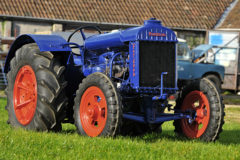Historic steamer Shieldhall
Posted by Chris Graham on 31st July 2020
We spotlight the historic steamer Shieldhall, that now spends its days running tourist trips out of Southampton.
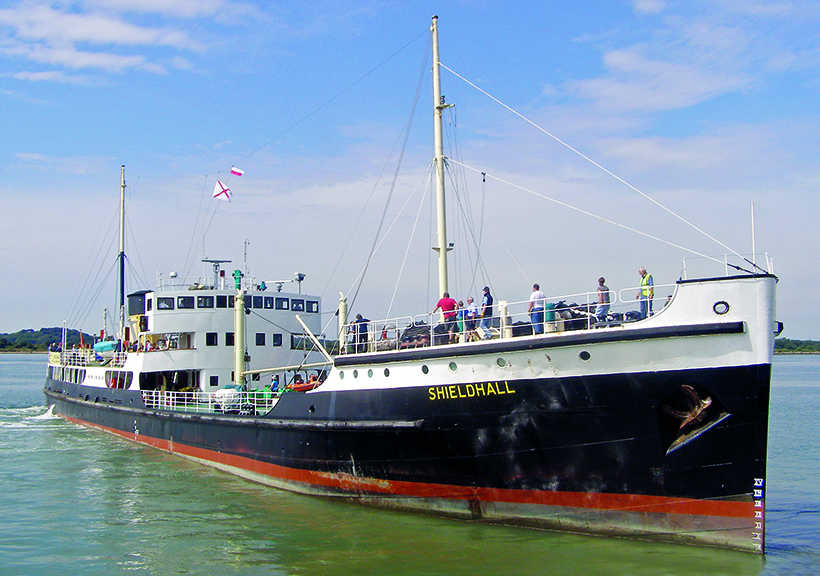
Historic steamer Shieldhall: If you’re out and about on Southampton Water during most summer weekends, you’ll probably come across a distinctive little ship named Shieldhall, her decks thronged with enthusiasts as she makes short voyages around the Solent.
The preserved, historic steamer Shieldhall is certainly a bit of an enigma. Now a well-known part of the Southampton shipping scene, she’s one of the best-run historic ships working in Britain today, and has an interesting and unusual history. In terms of her appearance and design, she is certainly unusual.
Forward of the aft mast, towards the stern, is a black and buff funnel with a cowled top, set upon a low, white superstructure, which signifies that she’s a steamship. Further forward are two old, open lifeboats that sit in cradles below two pairs of equally antiquarian davits, while the forward-end of the superstructure is built up with a handsome ‘island’ bridge structure.
Forward of the superstructure, there’s a large working deck and a pair of kingposts leading up to a tall mast and a raised forecastle.
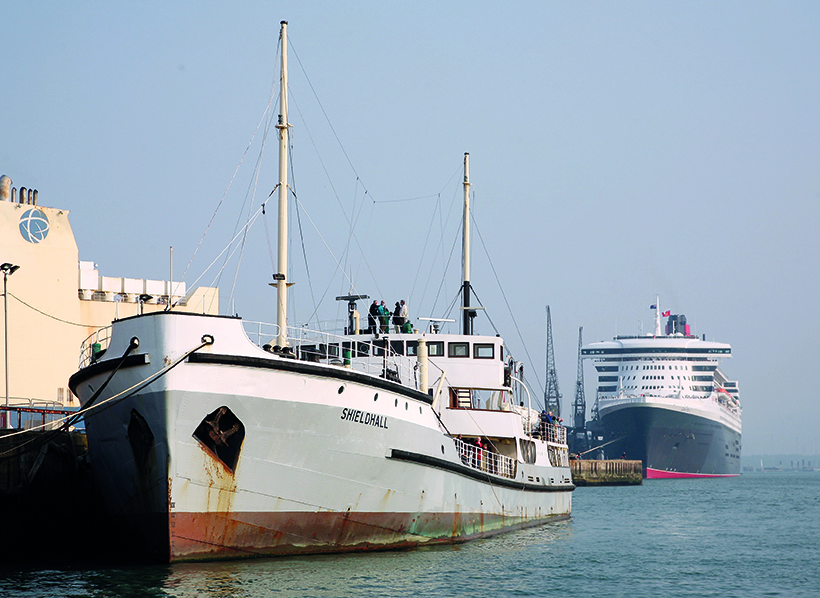
Shieldhall berthed ahead of Queen Mary 2 at Southampton in April 2008, when she carried a grey hull. (Pic: Nicholas Leach)
Shortsea cargo ship
Shieldhall was designed as a shortsea cargo ship, but a large saloon is discernible at the forward-end of the superstructure, below the bridge island, indicating that she carried passengers in the course of her normal duties. So, what was her purpose?
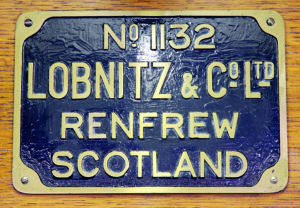
The original builder’s plate with the yard number displayed, aboard Shieldhall.
Well, the ship was designed as an effluent sludge carrier for the city of Glasgow’s sewage, in the days before disposing of sewage at sea was frowned upon. She used to take her cargo down the Clyde and out to the open waters off the Isle of Arran, where the sludge was dumped. Intriguingly, at the time, the local authorities in Glasgow were so concerned about the welfare of their citizens in the crowded, smoky confines of the city, that they decreed that the daily trips made by Shieldhall should be made available to personages wanting to take a short cruise to the open sea to take in the fresh air.
Shieldhall was ordered by Glasgow Corporation. Five bids to build the ship were considered, but the shipyard of Lobnitz & Co, at Renfrew on the Clyde, was chosen. At the time, when most shipowners were looking towards the efficiencies of diesel propulsion, Glasgow Corporation took the unusual step of stipulating twin-screw, triple-expansion steam machinery, following the satisfactory experience of running earlier steam-driven sludge carriers.
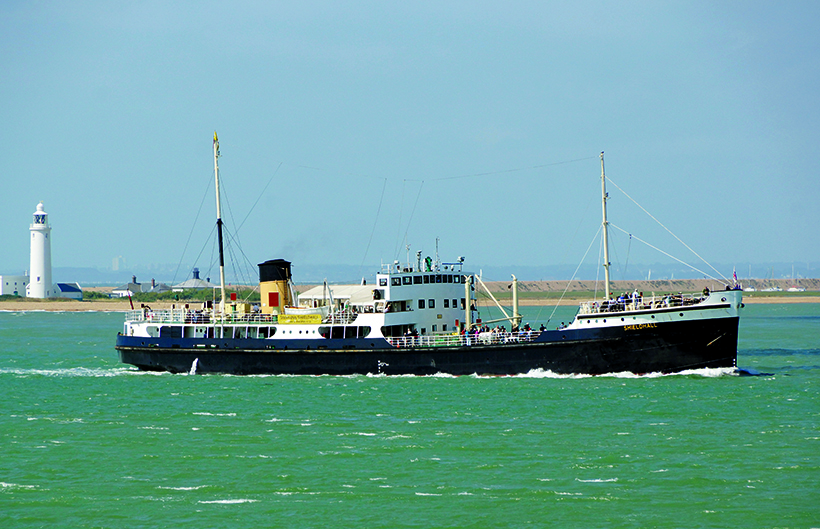
Shieldhall passing Hurst Castle in 2016. (Pic: Andrew Cooke)
Passenger-carrying tradition
Two, oil-fired boilers supplied steam to the main engines, the steering gear, windlass and other auxiliaries. In line with the 1,400grt Dalmarnock (1925), a passenger lounge and galley were also stipulated, thus perpetuating the tradition of carrying passengers initiated by the 1910-built Shieldhall, which had taken convalescing British soldiers on day trips during World War I.
Although ordered in the latter part of 1951, the ship wasn’t laid down until October 1954, due mostly to the difficulty in obtaining steel, following World War II. One can only assume that other, more substantial projects were given priority, and that the contract with Lobnitz provided ample leeway with the delivery date.
Shieldhall was constructed with a part-rivetted and part-welded hull, with four sludge cargo tanks of 1,800 tons in capacity, that were self-discharging without the need for pumping. She was launched on July 7th, 1955, by the Lady Provost of Glasgow, Mrs Hood and, following satisfactory sea trials, was commissioned on October 16th, 1955.
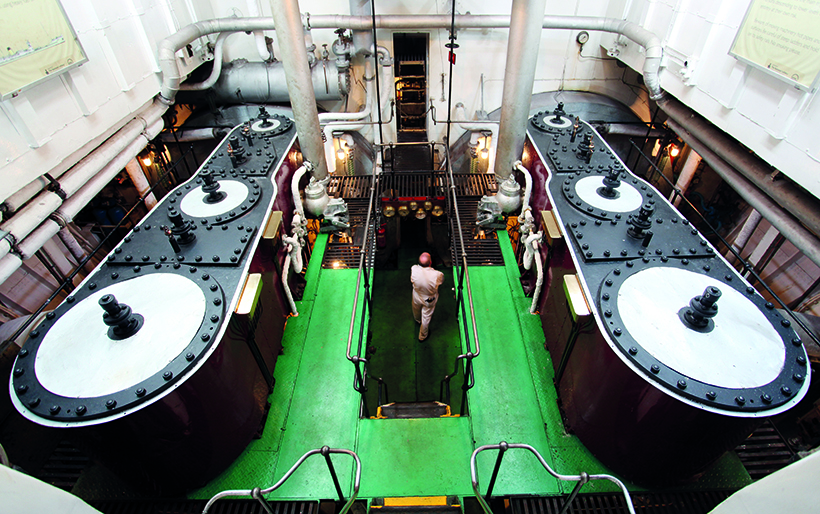
The engine room, seen from the elevated walkway, is usually open to guests.
Unusually, the two, triple-expansion reciprocating steam engines were only used for propulsion, as they lacked main engine-driven auxiliaries such as pumps. This led to a simple, uncluttered layout ideal for maintaining the engines, and provided space sufficient for passengers to take tours of the engine room. The same holds true today, with the ship run as a heritage vessel. Each engine is rated at 800hp, and drives a four-bladed propeller.
The choice of engines represented quite a challenge to the shipbuilder, as it no longer had any plans for such antiquated designs. Consequently, help was called for from the neighbouring Fleming and Ferguson Shipyard, which still had blueprints for reciprocating steam engines.
Limited speed
For normal service transits to the dumping ground, Shieldhall operated at around nine knots, with the propellers turning at 86rpm. Her top speed was 13 knots. In preservation, her speed is invariably limited to nine knots to conserve fuel and limit operating expenses.
Steam-driven auxiliaries in the engine room include the ballast pump, the fresh water pump and the general service pump. The latter circulates sea water through the condenser, to condense the steam leaving the reciprocating engines back into water for return to the boilers, as well as supplying water for the ship’s toilets.
Upon entering service, Shieldhall worked alongside Dalmarnock, which was converted from coal- to oil-firing in 1958. Each year, the ships undertook around 480 return transits to the dumping ground three miles south of Garroch Head, on the Isle of Bute, to the east of the Isle of Arran. The return voyage would take about eight hours from either Shieldhall or Dalmuir sewage works, the actual dumping taking very little time to effect.
Throughout April to September each year, Shieldhall would host more than 80 passenger groups or parties, when her saloon was an invaluable asset to their comfort. With her broad beam and relatively deep draught, she was a steady ship, especially in the sheltered waters of the Clyde. In 1961, she was in collision with Saxon Star, which may have prompted the installation of the ship’s first radar set, in 1962.
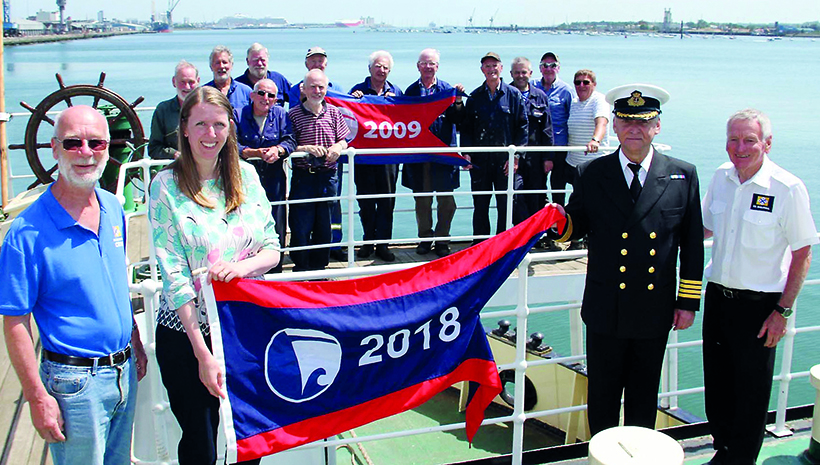
A presentation of Shieldhall’s Regional Flagship of the Year pennant with, left-to-right, Graham Mackenzie, Hannah Cunliffe, Robert Siddall and Rob Robson.
Official retirement
Late in 1970, the veteran Dalmarnock was withdrawn and scrapped, to be replaced, in December, by a new, diesel-driven vessel of the same name. The advantages of diesel propulsion were soon evident; lower fuel consumption, reduced crewing requirements and a more compact machinery arrangement, leading to more space for sludge. Time was catching up with Shieldhall, and she was withdrawn on October 24th, 1976, being replaced by the new motor ship, Garroch Head (2,808grt), which also carried passengers.
Shieldhall was subsequently laid-up pending sale, and was lucky not to have been immediately sold for scrap, given her age and machinery. In the event, she was sold in late 1977 to the Southern Water Authority and, after a refit, left the Clyde to take up residence in Southampton. Curiously, Southern Water didn’t have any work for her until 1980, when she was reactivated in May that year.
Thereafter, she collected sludge from Woolston, Slow Hill Copse and Millbrook, and dumped it in the Solent, south of the Nab Tower, to the east of the Isle of Wight. The round-trip took around eight hours at nine knots. On July 5th, 1985, she was withdrawn due to her high operating costs, having dumped 1.5 million tonnes of sludge during her Southern Water career.

The Shieldhall is all about enthusiasts enjoying their cruise on a historic ship, and sharing a memorable experience with others.
Once again, luck played a big part in Shieldhall’s survival, when several local preservation groups began discussing the ship’s fate with an eye to preserving her. The Southampton University Industrial Archaeology Preservation Group and Southampton City Council Museums Service became involved, and an approach was made to Southern Water to acquire the ship.
Southern Water agreed to retain the ship while a society was formed to raise the £20,000 purchase price, equivalent to the scrap value of the ship. Much credit must go to Southern Water for its co-operation and understanding, and also to Associated British Ports Southampton, which agreed to the ship being laid-up while funding was put in place. Eventually, after three years of exhaustive fund-raising, Shieldhall was handed over to the Solent Steam Packet Ltd on July 28th, 1988, and entered a new phase in her long and unusual career.
Now in her 65th year, Shieldhall represents a remarkable survivor. As with many historic institutions and museums, the Covid-19 pandemic has had a considerable impact on the ship, but let’s hope that she’ll soon be back in steam, offering heritage sailings to her enthusiastic volunteers, society members and the general public, and that she continues to do so for many years to come.
For a money-saving subscription to Ships Monthly magazine, simply click here




